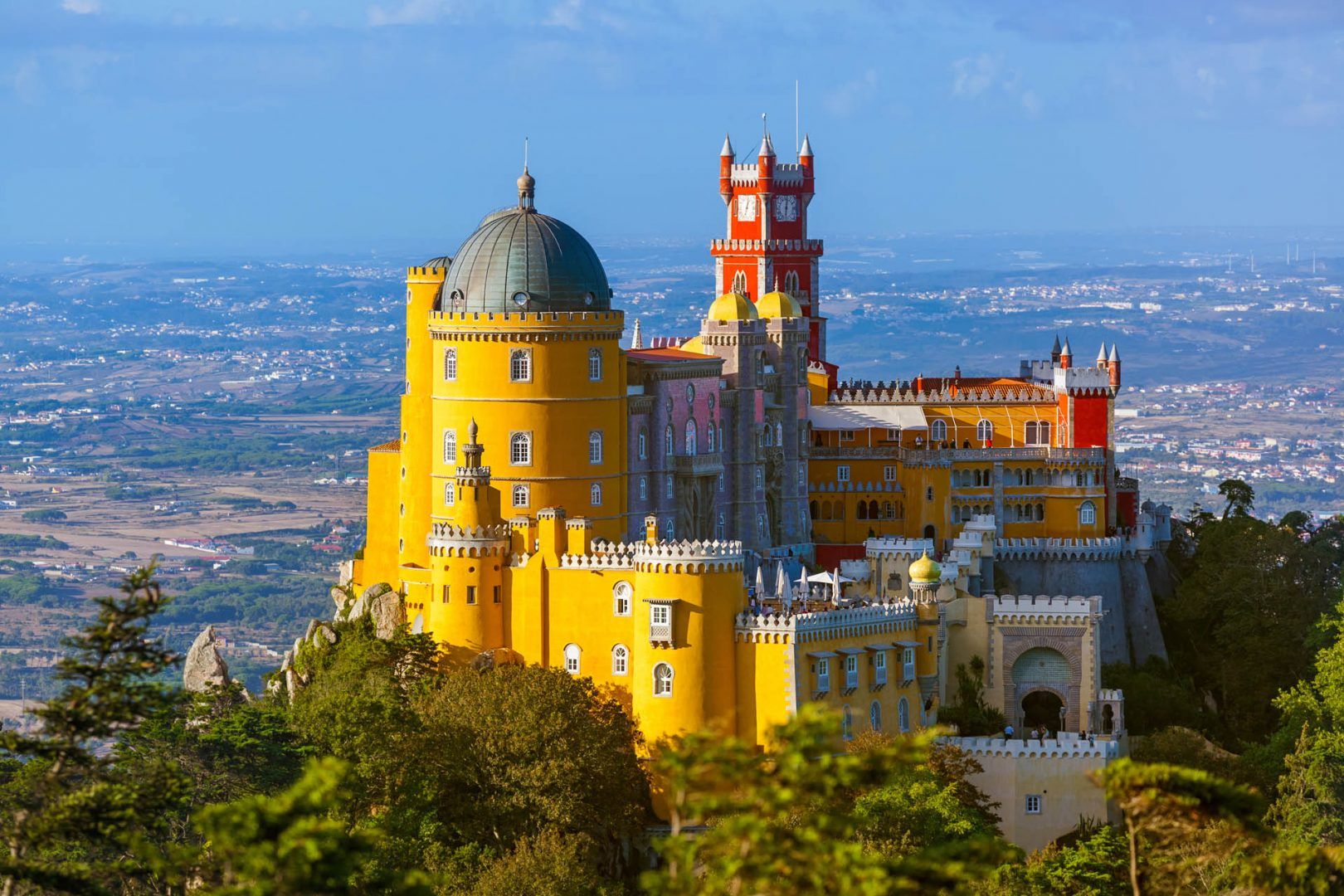2 days in Lisbon
If you’re visiting Lisbon on a short city break, the following 2-day itinerary is designed to cover top attractions in slick and rewarding style.
Also make sure to read all about our detailed Portugal itinerary to get the best out of your trip.
Suggested itinerary
With day one mainly focused on historic highlights, and day two devoted to delivering a mix of history and modern sights, here’s how to live your best Lisbon life in just two days.
Day 1
Start out early at Praça do Comércio — the city’s main square and one of Lisbon’s most iconic landmarks. Think grand yellow arcaded buildings, scenically located along the Tagus River.
Must-see sights here include the equestrian statue of King José I — a tribute to the king who led Portugal’s recovery after its 1755 earthquake — and the Rua Augusta Arch, which denotes the entrance to the square from the Baixa barrio.
After climbing to the top of the arch for breath-taking views, head through it to explore Baixa district. It’s a wonderful place to shop and find someplace pretty for lunch.
Come the afternoon, head to the atmospheric Alfama district. As Lisbon’s oldest neighbourhood, it’s loaded with historic attractions, including Lisbon Cathedral (Sé de Lisboa), with the Miradouro de Santa Luzia viewpoint serving (you guessed it!) stunning views.
The same is true of São Jorge Castle, which arguably offers the best panoramic views of Lisbon.
You could also ride tram 28 to take in stacks of historic sights.
When dusk falls, dine in a local restaurant (don’t miss the change to try Bacalhau à Brás, a local codfish dish), or enjoy traditional fado music in Alfama.
Day 2
Rise early on day two to take a tram or bus to Belém — a district that’s also home to tons of Lisbon’s top landmarks, among them the Jerónimos Monastery and Belém Tower, an iconic fortress loced right by the river.
This is also the ideal place to stop off for a Pastéis de Belém — the original (and best) custard tart.
Modern culture awaits in the afternoon, if you follow our itinerary suggestion to explore the LX Factory, an industrial-chic area packed with cool cafes and street art.
Be sure to visit the MAAT Museum for contemporary art and architecture before taking a late-afternoon stroll along the Tagus River to see Lisbon’s iconic Ponte 25 de Abril bridge.
Round off your stay in Lisbon with drinks in one of Bairro Alto’s lively rooftop bars.







